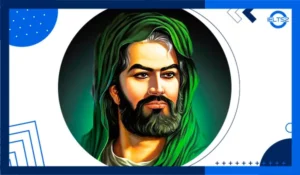نمونه سوالات اسپیکینگ آیلتس درباره مجسمه سازی (پارت 1 2 3)
در این بخش بیش از 20 مورد از نمونه سوالات اسپیکینگ آیلتس نمره 9 درباره “مجسمه سازی” را با هم میبینیم. این مجموعه از آخرین سوالات گزارش شده از سنترهای برگزار کننده آیلتس در ایران و خارج از کشور مربوط به پارت 1، 2 و 3 می باشند و شانس تکرار آن ها در آینده بالاست. در ادامه مطلب همچنین نکات گرامری، لغات و دلایل دریافت نمره 9 را به طور مشخص توضیح داده ایم تا راهنمایی برای علاقمندان باشد. 1000 نمونه سوالات اسپیکینگ آیلتس با جواب PDF پارت 1 2 3 پیشنهاد بعدی ما به شما عزیزان است.
نمونه سوالات اسپیکینگ آیلتس درباره مجسمه سازی (پارت 1)
Do you like sculptures?
Absolutely. I find sculptures to be a fascinating form of artistic expression. They capture intricate details and emotions that other art forms may struggle to convey. Whether made of marble, wood, or metal, sculptures hold historical and cultural significance, showcasing human creativity throughout centuries. I particularly admire Michelangelo’s works, as his mastery in sculpting lifelike figures is unparalleled. Viewing sculptures in museums or public spaces gives me a sense of awe and appreciation for the craftsmanship involved.- Have you ever made a sculpture?
Yes, I once tried my hand at sculpting during an art class. Although my attempt was rudimentary, it gave me insight into the skill and patience required for this art form. The process of shaping clay and refining details was both challenging and rewarding. I developed a deeper appreciation for sculptors who dedicate years to perfecting their craft. If given the chance, I would love to explore sculpting further and experiment with different materials like stone or metal. - Are sculptures common in your country?
Yes, sculptures are quite prevalent in my country, particularly in historical sites, public squares, and museums. Many cities feature statues of national heroes and significant figures, symbolizing cultural heritage. Additionally, contemporary artists create modern sculptures for urban spaces, blending tradition with innovation. This artistic presence enriches public areas, providing aesthetic appeal and historical context. Traditional wood and stone carvings are also significant in indigenous communities, preserving centuries-old craftsmanship. - What types of sculptures do you like?
I appreciate both classical and contemporary sculptures. Classical sculptures, like those from Ancient Greece and the Renaissance, exhibit remarkable precision and beauty. Their anatomical accuracy is astonishing. On the other hand, modern sculptures challenge conventional forms, incorporating abstract designs and mixed materials. I also enjoy large-scale public sculptures that transform urban landscapes. Each style has its unique charm, making sculpture a versatile and evolving art form. - Where can you see sculptures in your city?
In my city, sculptures can be found in various locations, including museums, public parks, and historical landmarks. Many government buildings and universities display statues of prominent leaders and intellectuals. Additionally, contemporary sculptures are integrated into urban spaces, often serving as focal points in plazas or cultural districts. Visiting sculpture exhibitions in art galleries is another excellent way to appreciate different artistic techniques and materials. - Do you think sculptures are important in modern society?
Absolutely. Sculptures serve as powerful symbols of culture, history, and artistic expression. They enhance public spaces, creating visually engaging environments that provoke thought and reflection. Additionally, sculptures commemorate historical events and influential figures, preserving cultural narratives for future generations. In contemporary society, sculptures also address social and political themes, encouraging discourse and awareness. Their significance extends beyond aesthetics, shaping collective memory and artistic innovation. - What materials are commonly used for sculptures?
Traditional sculptures are often made from marble, bronze, wood, and clay. Each material has unique properties influencing the final artwork’s texture and durability. Modern sculptures incorporate unconventional materials like glass, plastic, and recycled objects, reflecting contemporary artistic trends. The choice of material plays a crucial role in the sculptor’s creative process, affecting the sculpture’s longevity, detail, and expressive potential. - Who is your favorite sculptor?
My favorite sculptor is Auguste Rodin, renowned for his expressive and dynamic sculptures. His masterpiece, The Thinker, embodies profound contemplation, showcasing intricate details and powerful realism. Rodin revolutionized sculpture by embracing a more naturalistic approach, capturing movement and emotion with remarkable depth. His works continue to inspire generations of artists and remain iconic representations of human introspection and artistic excellence. - Would you like to learn sculpting as a hobby?
Definitely. Sculpting is a deeply immersive and rewarding creative process. It allows for hands-on engagement with materials and encourages patience, precision, and artistic vision. Learning sculpting as a hobby would provide an opportunity to experiment with different textures and techniques. Additionally, creating tangible three-dimensional art is highly satisfying. If time permits, I would love to take sculpting workshops and develop my skills further. How do sculptures influence architecture?
Sculptures significantly impact architectural aesthetics and design. Many historic buildings feature intricate carvings and relief sculptures, adding depth and character to their facades. In modern architecture, sculptural elements enhance public spaces, making structures visually compelling. The integration of sculpture and architecture fosters a harmonious blend of function and artistic expression, resulting in iconic landmarks that resonate with cultural and artistic significance.
نمونه سوالات اسپیکینگ آیلتس درباره مجسمه سازی (پارت 2)
Describe a sculpture you admire.
- What the sculpture is
- Where you saw it
- What it looks like
- Why you admire it
One sculpture that I deeply admire is David by Michelangelo, an iconic Renaissance masterpiece. I first saw it at the Galleria dell’Accademia in Florence, and it left an unforgettable impression. David is a towering marble sculpture depicting the biblical hero in a poised and contemplative stance, his musculature intricately detailed, exuding both strength and vulnerability.
What makes this sculpture remarkable is Michelangelo’s ability to capture human anatomy with such precision and realism. The intricate carving of veins, tendons, and facial expression showcases an unparalleled mastery of the medium. The sheer scale and proportion of the sculpture, combined with its flawless execution, make it a symbol of artistic genius.
I admire David not only for its technical brilliance but also for its historical and symbolic significance. It represents human potential, courage, and intellectual refinement, embodying the spirit of the Renaissance. Standing before this sculpture, I felt an overwhelming appreciation for the dedication and skill required to create such an enduring masterpiece.

نمونه سوالات اسپیکینگ آیلتس درباره مجسمه سازی (پارت 3)
How have sculptures evolved throughout history?
Sculptures have undergone significant transformations, from ancient religious depictions to Renaissance masterpieces and modern abstract forms. Early civilizations, like the Egyptians and Greeks, focused on idealized human figures and deities, while the Renaissance reintroduced realism and intricate detailing. The 20th century saw a shift towards experimental and conceptual sculptures, incorporating unconventional materials and abstract themes. This evolution reflects societal changes, technological advancements, and artistic innovation, making sculpture a continuously evolving art form.- What role did sculptures play in ancient civilizations?
In ancient civilizations, sculptures served religious, political, and commemorative purposes. Egyptian statues immortalized pharaohs and gods, symbolizing divine power and afterlife beliefs. Greek sculptures emphasized human beauty and perfection, often depicting mythological figures. Roman sculptures, influenced by Greek art, also portrayed emperors and historical events. These artworks not only preserved cultural and historical narratives but also demonstrated advanced craftsmanship and artistic ideals of their time. - How do modern sculptures differ from classical sculptures?
Classical sculptures often focused on realism, proportion, and idealized human forms, especially during the Renaissance and Greek periods. In contrast, modern sculptures embrace abstraction, experimentation, and unconventional materials. Contemporary sculptors use industrial materials, digital fabrication, and even recycled objects, moving beyond traditional aesthetic norms. Additionally, modern sculptures frequently explore conceptual themes, social issues, and interactive installations, reflecting contemporary artistic discourse. - What impact do public sculptures have on urban environments?
Public sculptures enrich urban spaces by adding aesthetic value, cultural identity, and artistic engagement. They transform ordinary locations into landmarks, fostering community interaction and tourism. Sculptures like Cloud Gate in Chicago or The Angel of the North in England serve as iconic symbols of their cities. Moreover, public sculptures often convey historical narratives, honor significant figures, or provoke societal discussions, making art accessible to all. - Should governments invest in sculptures and public art?
Absolutely. Investing in sculptures and public art enhances cultural heritage, civic pride, and artistic appreciation. Public sculptures contribute to the visual and historical identity of a place, making cities more attractive to residents and tourists. Additionally, supporting sculpture commissions fosters the careers of contemporary artists. While some may argue that funds should prioritize essential services, art’s impact on mental well-being, community cohesion, and urban aesthetics makes it a worthwhile investment. - How do sculptures contribute to historical preservation?
Sculptures play a crucial role in preserving history by immortalizing figures, events, and cultural traditions. From war memorials to religious carvings, they provide tangible links to the past, allowing future generations to understand their heritage. Many historical sculptures serve as records of artistic techniques and societal values, offering invaluable insights into civilizations. Restoring and protecting these sculptures ensures that history remains visually accessible and educational. - What skills are required to be a successful sculptor?
A successful sculptor needs a combination of technical expertise, creativity, and patience. Mastery of sculpting techniques—whether carving, molding, or assembling—is essential. Knowledge of materials like stone, metal, and clay allows for diverse artistic expression. Additionally, strong observational skills help sculptors capture form, movement, and texture with precision. Creativity and innovation also play a vital role, enabling sculptors to push artistic boundaries and experiment with new concepts. - Why do some people prefer sculptures over paintings?
Some people prefer sculptures over paintings due to their three-dimensional nature, which allows for physical interaction and varied perspectives. Unlike paintings, which are confined to a canvas, sculptures occupy space and engage viewers from different angles. Additionally, sculptures often have a tactile element, with intricate textures and materials that evoke a sensory experience. Their durability and ability to exist in public spaces also make them more accessible to a broader audience. - What challenges do sculptors face today?
Modern sculptors encounter various challenges, including high material costs, limited exhibition opportunities, and the need for extensive space to create and display their work. Additionally, contemporary sculpture often competes with digital art forms, requiring artists to adapt and explore new technologies like 3D printing. Finding patronage or government funding can also be difficult, as art funding is sometimes deprioritized in favor of other sectors. How will technology influence the future of sculpture?
Technology is revolutionizing sculpture through advancements like 3D printing, digital modeling, and interactive installations. These innovations allow for greater precision, scalability, and experimentation with unconventional materials. Virtual and augmented reality are also expanding sculpture’s possibilities, enabling digital sculptures to exist in immersive environments. As technology continues to evolve, the boundaries of sculpture will expand, integrating digital and physical elements in unprecedented ways.- این تحلیل نشان میدهد که چرا پاسخهای ارائهشده در سطح نمره ۹ قرار دارند
۱. واژگان پیشرفته و استفاده از اصطلاحات تخصصی
پاسخها شامل طیف وسیعی از واژگان تخصصی مرتبط با مجسمهسازی هستند که دانش گسترده در این زمینه را نشان میدهند. برخی از نمونهها عبارتند از:
- anatomical accuracy (دقت آناتومیکی)
- conceptual themes (موضوعات مفهومی)
- sculptural elements (عناصر مجسمهسازی)
- mixed materials (مواد ترکیبی)
- artistic discourse (گفتمان هنری)
همچنین از ترکیبات طبیعی (collocations) استفاده شده است که نشاندهنده تسلط بر زبان انگلیسی است:
- profound contemplation (تفکر عمیق)
- unparalleled mastery (مهارت بینظیر)
- intricate detailing (جزئیات پیچیده)
- unconventional materials (مواد غیرمعمول)
۲. ساختارهای دستوری پیچیده
پاسخها شامل جملات پیچیده با استفاده از ساختارهای پیشرفته هستند:
- جملات موصولی برای توضیح بیشتر و ایجاد ارتباط بین ایدهها:
- “Many historical sculptures serve as records of artistic techniques and societal values, offering invaluable insights into civilizations.”
- ساختارهای شرطی و فرضی که نشاندهنده مهارت در زبان انگلیسی است:
- “If given the chance, I would love to explore sculpting further and experiment with different materials.”
۳. انسجام و پیوستگی متنی (Cohesion & Coherence)
- استفاده از کلمات ربط مناسب برای پیوند دادن ایدهها، مانند:
- Moreover, additionally, in contrast, while some may argue
- استفاده از ضمایر و ارجاعات برای جلوگیری از تکرار:
- these innovations, this evolution, such an enduring masterpiece
۴. دامنه وسیع گرامری و دقت بالا
- استفاده صحیح و متنوع از زمانهای گرامری، از جمله حال ساده، گذشته ساده، حال کامل، و آینده برای بیان ایدهها به وضوح.
- کاربرد مناسب مجهول (Passive Voice) در مواردی که لازم است بر خود عمل تمرکز شود نه فاعل آن:
- “Public sculptures are often commissioned to commemorate significant events.”
تعیین سطح رایگان اسپیکینگ ❤️
نمونه سوالات اسپیکینگ آیلتس درباره “مجسمه سازی” پارت 1 2 3 را به همراه سمپل های نمره 9 آن ها با هم دیدیم. در ادامه نمونه سوالات دسته بندی شده اسپیکینگ آیلتس پیشنهاد آخر ما به دوستان گرامی هست. این نمونه سوالات اسپکینگ از پرتکرار ترین تاپیک های این بخش و همچنین جدیدترین موضوعات می باشند. این مجموعه توسط یکی از سایت های معتبر و فعال آیلتس تنظیم شده است. همچنین برای تعیین سطح و تعیین رایگان نمره اسپیکینگ و دریافت جدید ترین سمپل های نمره 9 در کانال تلگرام اسپیکینگ ما همراه باشید و به ادمین برای تعیین نمره اطلاع دهید.







